FORK REBUILDING
You would think building Lambretta forks was straight forward and easy?
Well they’re not, there are so many things that can be wrong and you need to know these things. If you’re not capable – then get a professional to do it!
It could be the welded hidden stops inside the fork legs are at a different height! Or it could be the fork boots are welded one higher than the other or the fork washers set off set!
The idea is – the end product is you want the hub to sit straight and upright in the forks. Not leaning at an angle which makes handling and braking fun. How many times do you see front hubs leaning to one side? You can see it on old worn out forks but you can even see this on new builds, custom bikes, Spanish forks or new remade forks.
There’s various checks to do to forks to make sure the end product is going to be perfect and theres only one way – perfection! Well built forks make the Scooter handle better in a straight line and going round corners and braking.
This is a service we’ve offered from the beginning, people have watched me strip and build their forks and said ‘I never knew that’ and ‘I can’t believe the time and effort you put into the rebuild’!
First, forks need taking apart, now this could be a decent set built by someone else, it could be a bare set ready for a restoration or it could be a seized genuine set never striped in 60 years!
Now Innocenti didn’t know the meaning of – grease! They hardly ever used it and Lambrettas ridden through the English winter would soon wear or seize fork internals.
The common one, is the fork bolt seized in the forks or more likely the bolt is seized in the steel bush. You can get the nut off and you can spin the bolt, but the bolt is spinning inside the forks with the bush seized solid and no matter what you do you can not get the bolt out. There are tricks for those who know and with the equipment. You can press it out, you can heat it up to free it off or you may have to cut off the bolt head and drill out whats left of the bolt – not an easy job! You may be lucky and the bolt just comes out with a light tap!
Theres various types of tools to strip the forks. We make an improved copy that Innocenti made, these have never let us down. Early types definitely need the compressing tool – later forks can be stripped without the tool, but mainly the tool is used to get links out.
Once forks are stripped we fit them to our Fork straightening fixture jig and check for trueness and check the fork bolts are inline and the steering column is in line. This is a different service to fork overhauling or rebuilding.
You can read about our fork jig here.
With forks are stripped, cleaned and checked, depending on painting, powder coating, chroming etc you can rebuild the forks.
MB make all the internals to build the forks – the links, rods, spring, bushes – they are designed for a precision rebuild. The parts we use will build true, if they don’t it’s the forks them selves.
On our Fork rebuilding bench we keep all the tools to strip and rebuild forks, unless the workshop equipment is required.
With the forks upside down in our fork holder you need to check the very important internal fork spring stops welded inside. We made special steel bars that sit on the stops and they will show if the stops are wrong – you will be surprised how many are welded wrong!
If they are wrong you need to space the stops the difference. Usually fork locating washers are good for this. Springs need checking they are the same length and tweaked if needed.
Fork stops come in all shapes and sizes. We offer 3 sizes – standard Gp thickness, half and double thickness. You can also use Li type stops but we use the simple Gp type. We like to use our half thickness stops with our triple rated springs as they are nice and soft riding in a straight line absorbing bumps. Once the brakes are applied at different rates they come into their own!
Genuine fork links are usually out on the casting where they sit on the rubbers. Some forks have miss matched fork links where the angles are different, these need checking. If using genuine links we use bars and bolts to bolt the two links together to see if the buffer area needs grind to become equal.
We make all the fork rubbers both in push in and bolt in style and we offer standard thin top ones and standard thick bottoms but we also offer medium thickness. You should fit thin ones to the top and fat ones to the bottom, but fat in the bottom compresses the springs so they are harder, fit medium or thin in the bottom helps lower the fork links giving a higher ride height and more suspension movement – something racers have done to gain ride height on corners.
Our MB fork links also give a slightly higher ride height. Our Black nylon bushes are pressed in the links and usually our stainless steel bushes fit and turn with no resistance. Some people hammer the steel bushes in and this effects how the forks work, we ream the plastic bushes so the steel bushes are perfect.
Our stainless bolts are precision made to suit all forks and our bushes, on assembly we always over grease all parts so they last a lifetime!
Once assembled we fit the lower buffers, if you’ve set the forks stops and the links are correct on the buffer areas and the fork springs are correct and straight to the forks – if you fit the buffers and the links are now higher than the other shown with a straight bar resting on the links it could be one of the boots is lower. This is where the different thickness buffers come into their own. You can fit a thin one to one side and medium on the other, it makes no difference you are just levelling up the forks that are wrong from the factory! It maybe a buffer needs the rubber cutting down to get the links level.
Take all this into the mix and where the damper brackets are welded, overhauling forks is never as easy as it seems.
Fork overhauling is a service we offer.
Fork straightening is also an other service we offer.
Any questions ask mark mark@mbscooters.co.uk
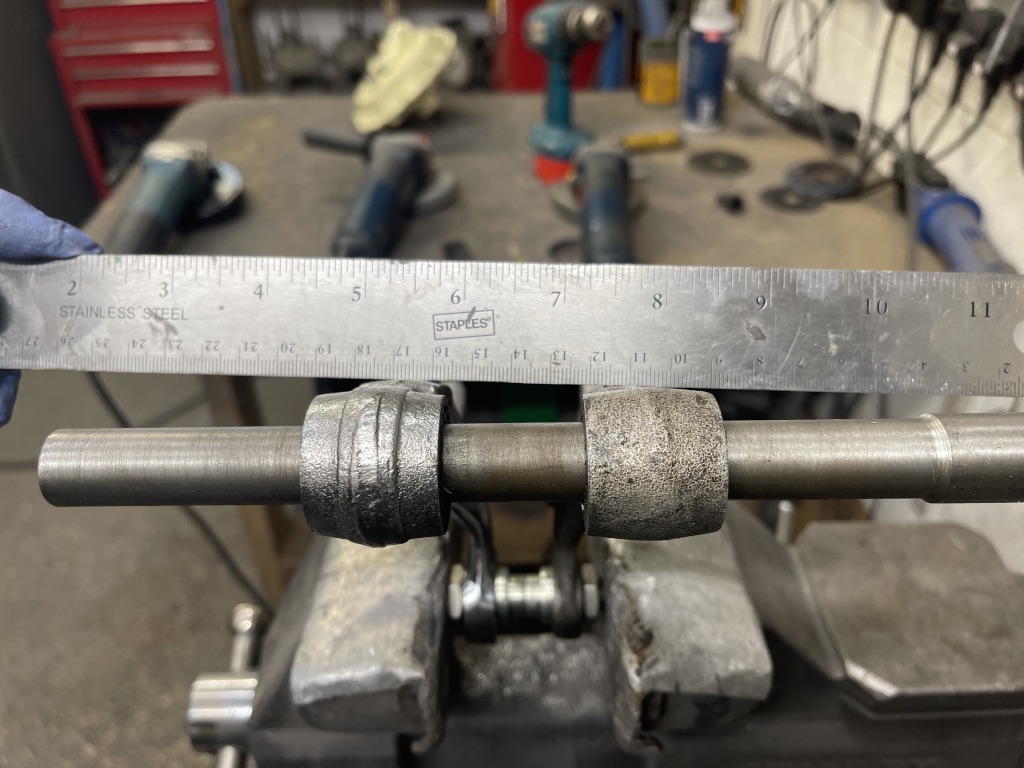
Shows how bad genuine links can be on the bottom buffer stops, this will set your wheel off set
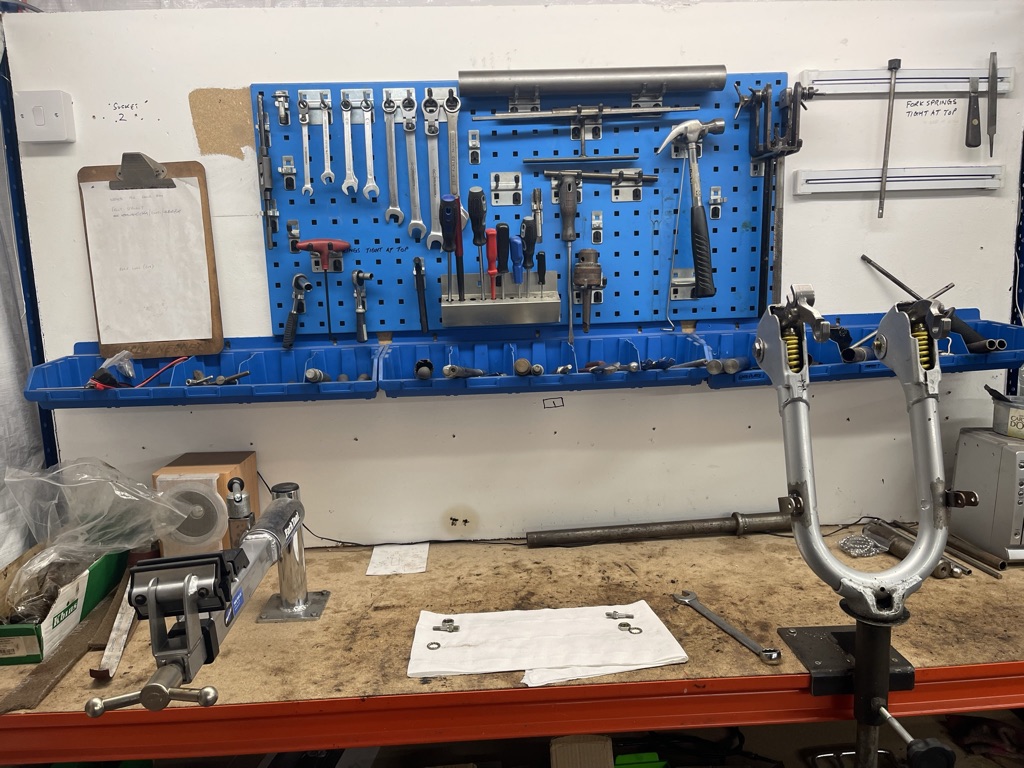
Shows our fork rebuilding bench area with tools
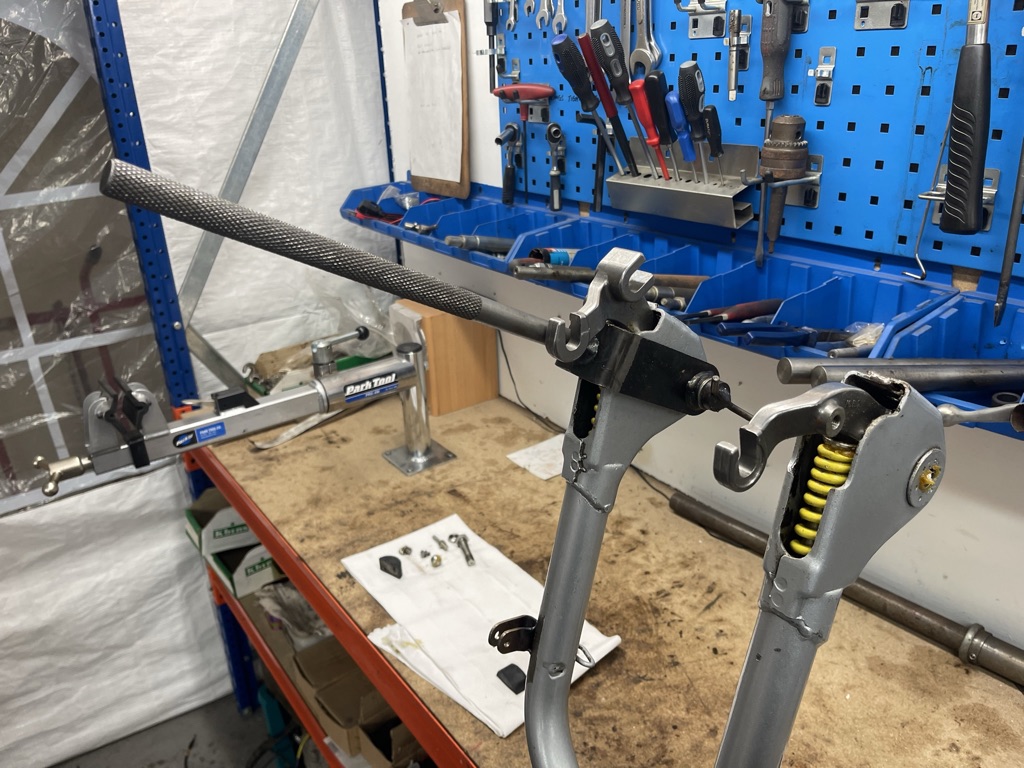
We made these fork compressing tools in house for many years, in the end we found a manufacturer for the job, this was the first sample, still used to day
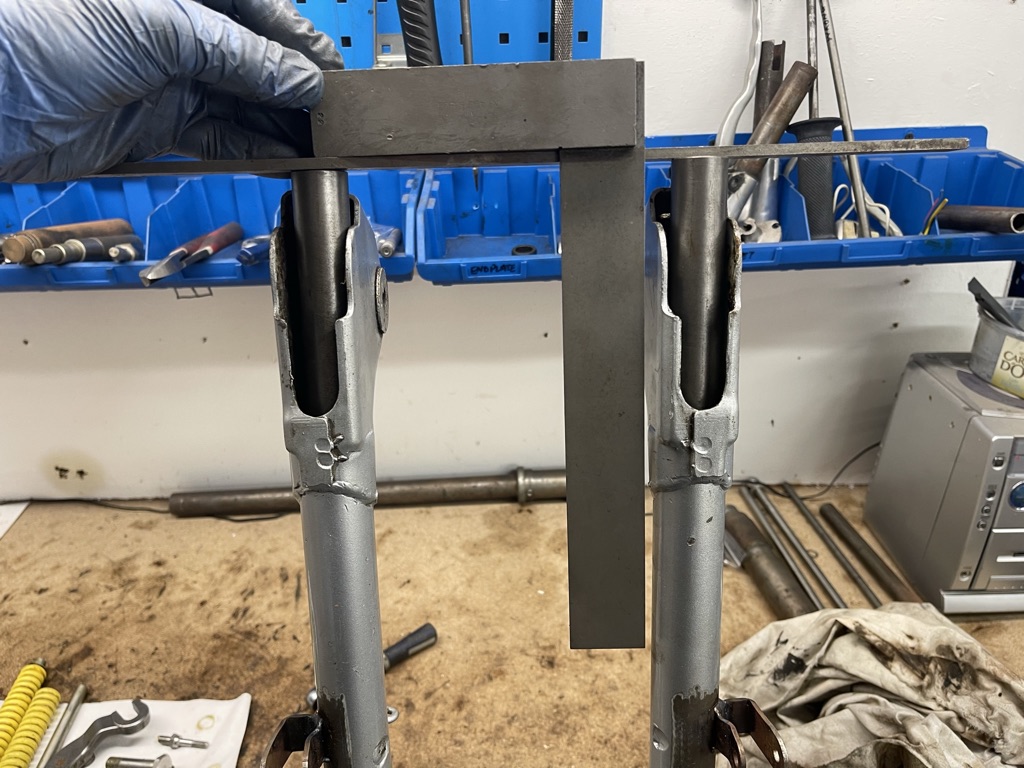
Our precision bars dropped onto the fork internal stops so you can see if they are 90 degrees to the forks
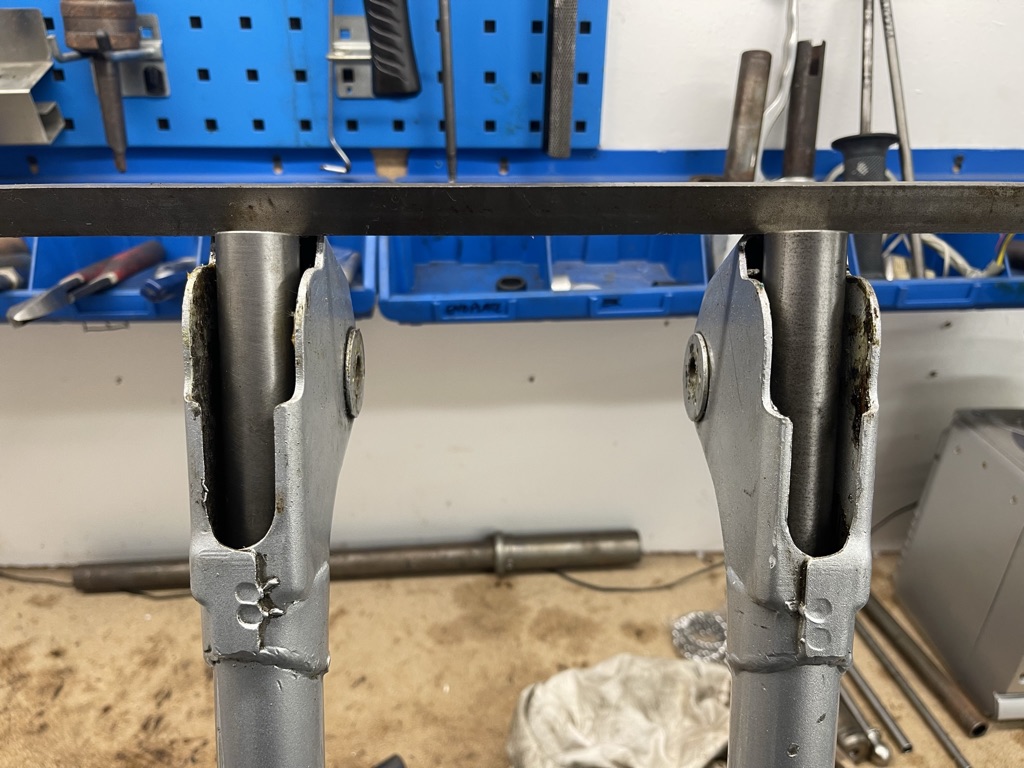
Laying the flat bar over the rods shows by eye how good the stops are
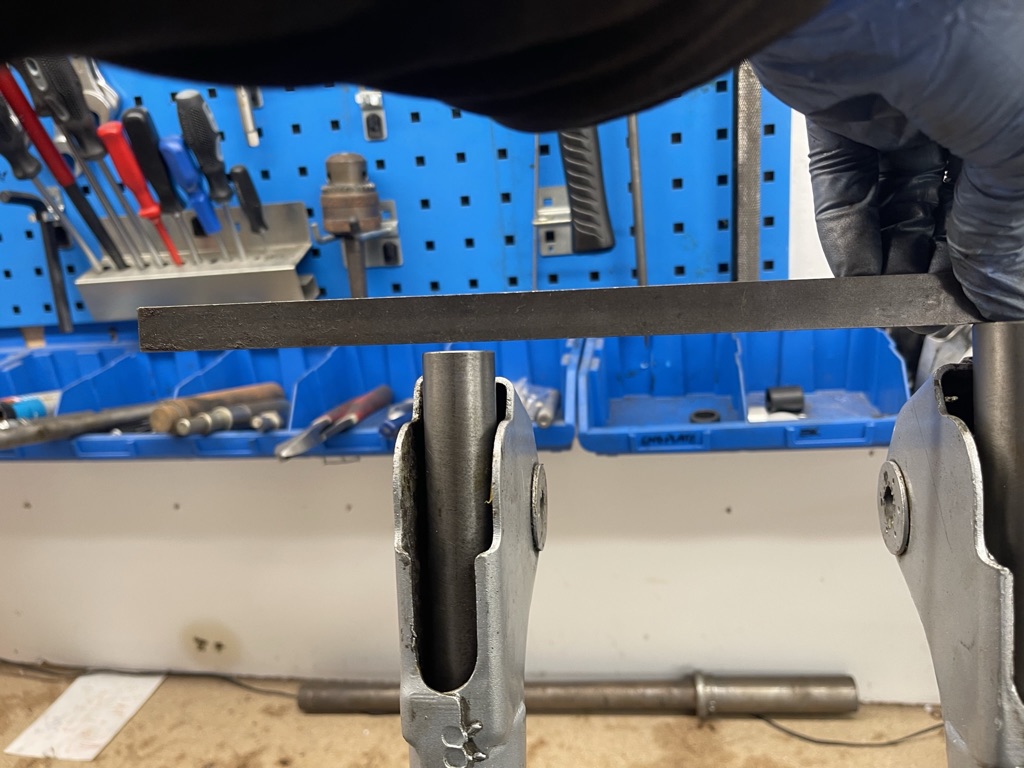
Showing how far out some can be, the gap needs shimming up on the fork springs
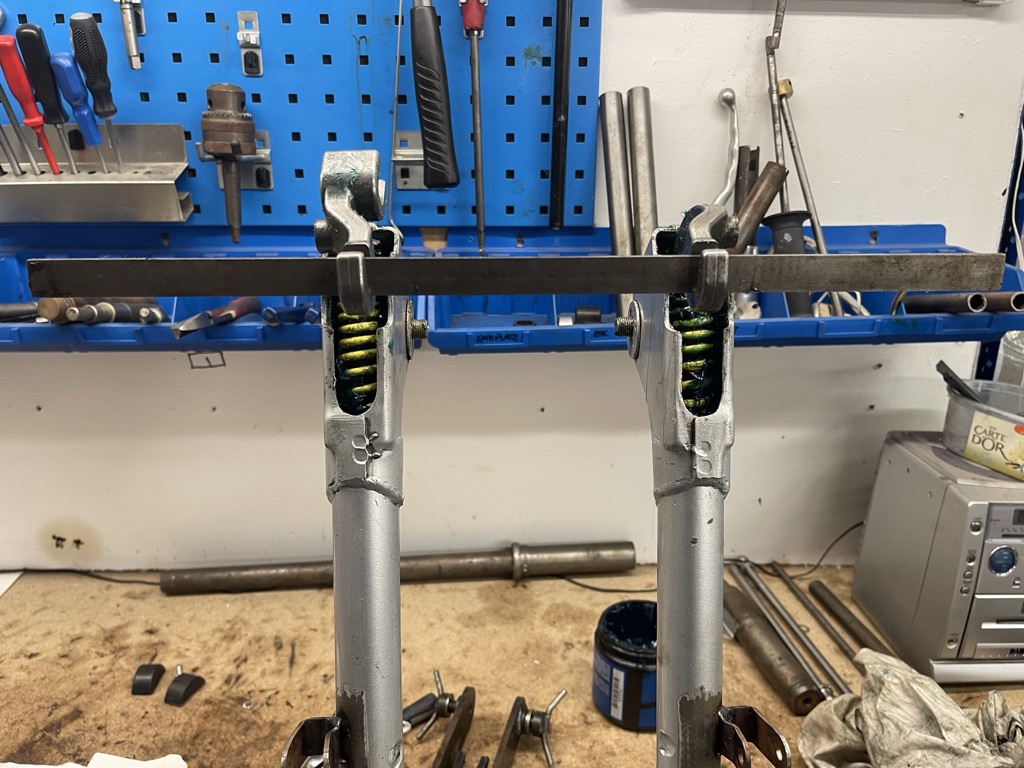
And a perfect set up on the links this needed 2 different lower fork buffer heights
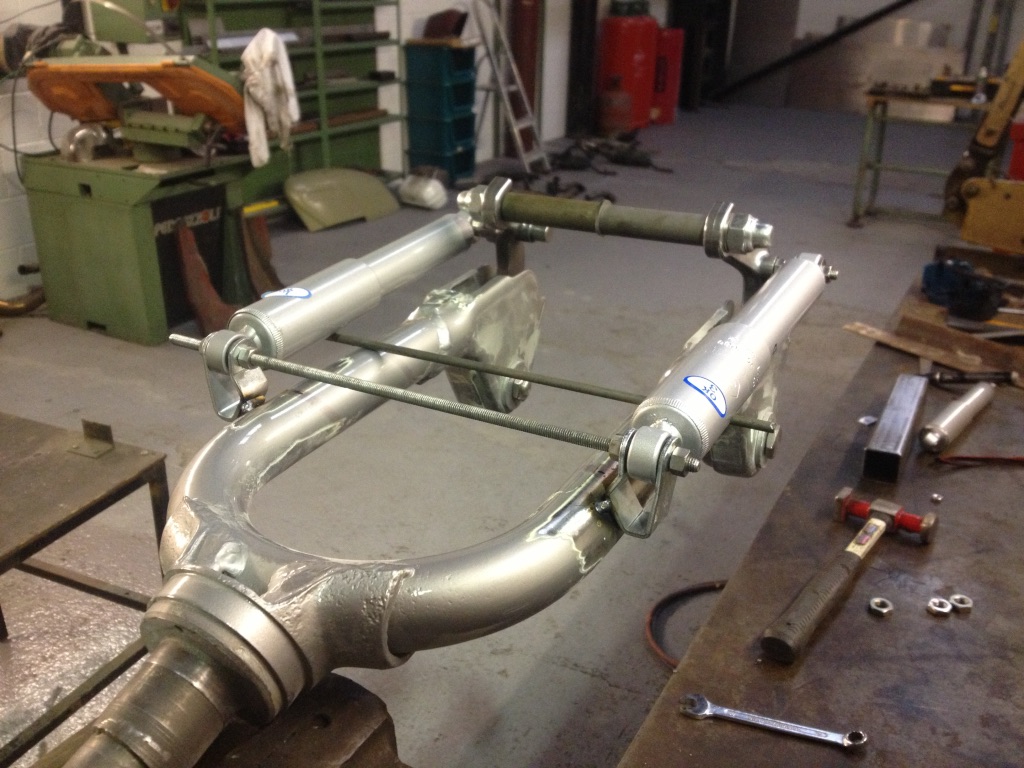
Setting up damper brackets the old way before the fork jig which nows saves half the time
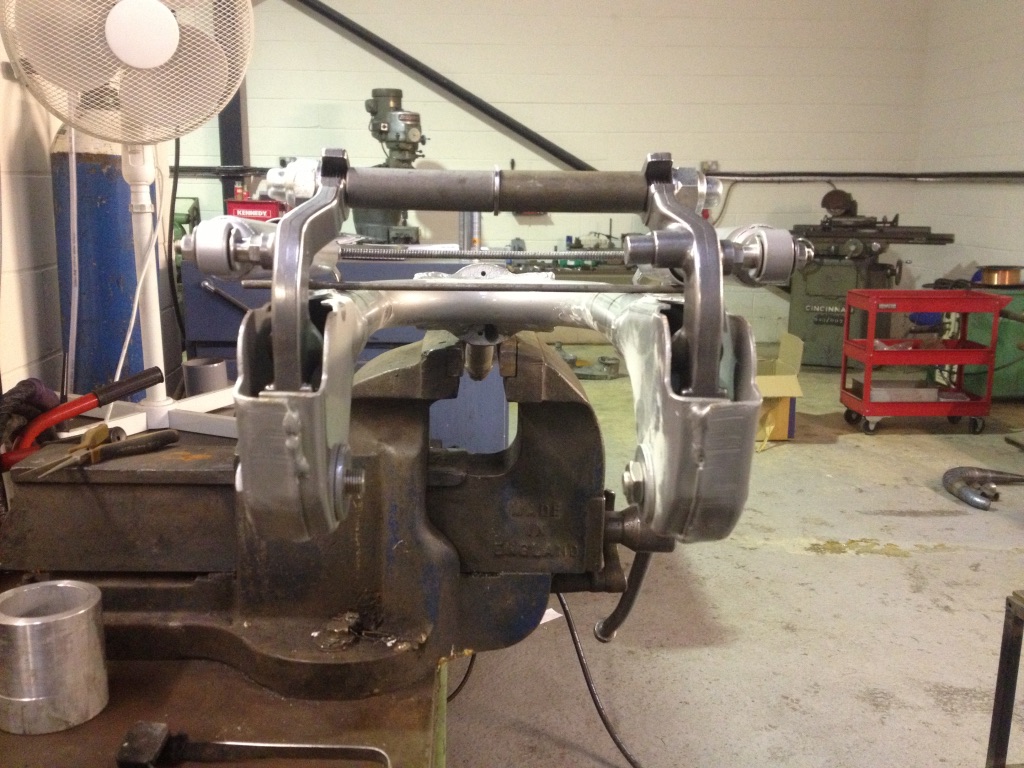
Well worth setting everything up true before you do any welding
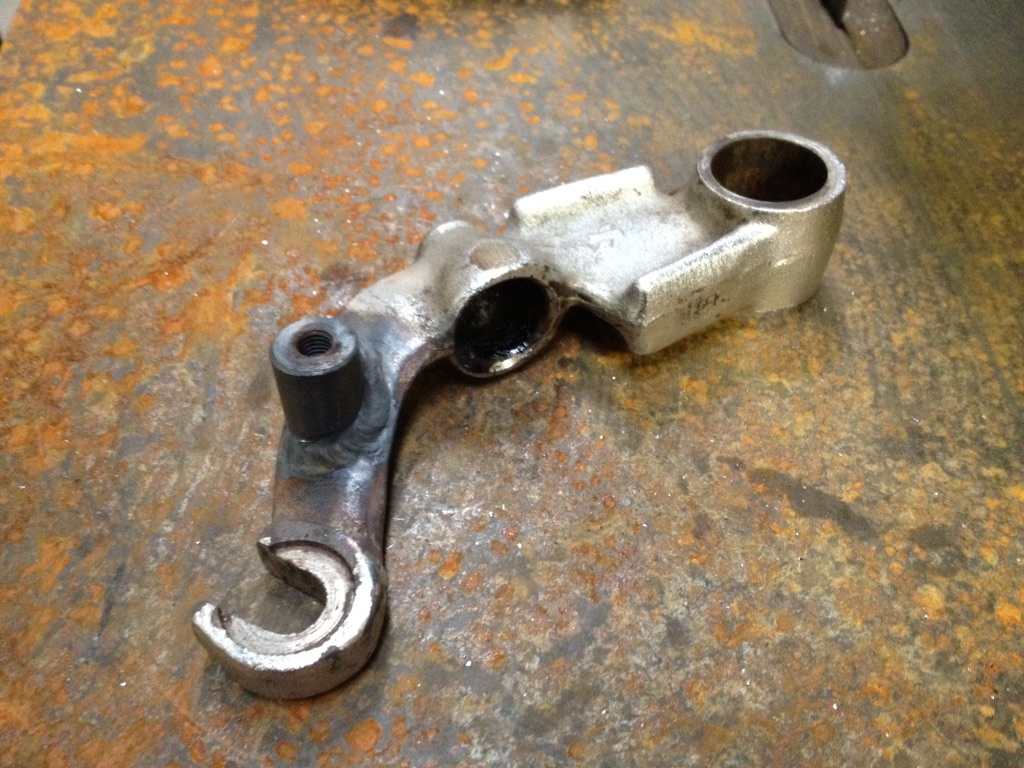
Modified drum links to use dampers
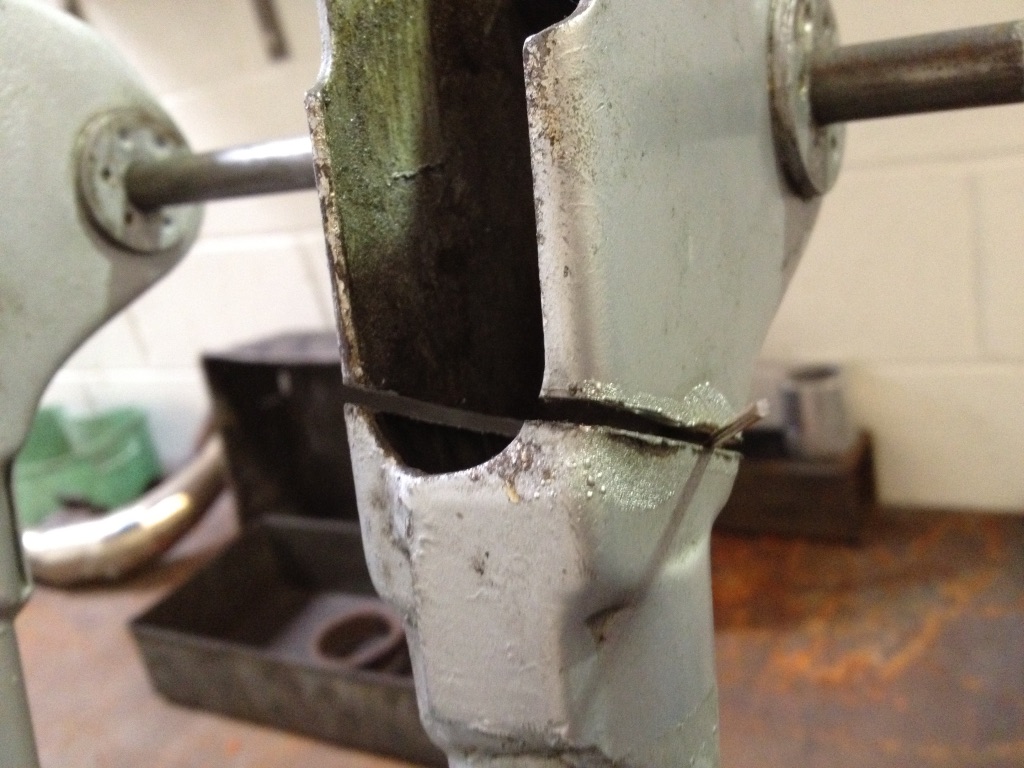
Some forks just need cutting and welding to get them straight
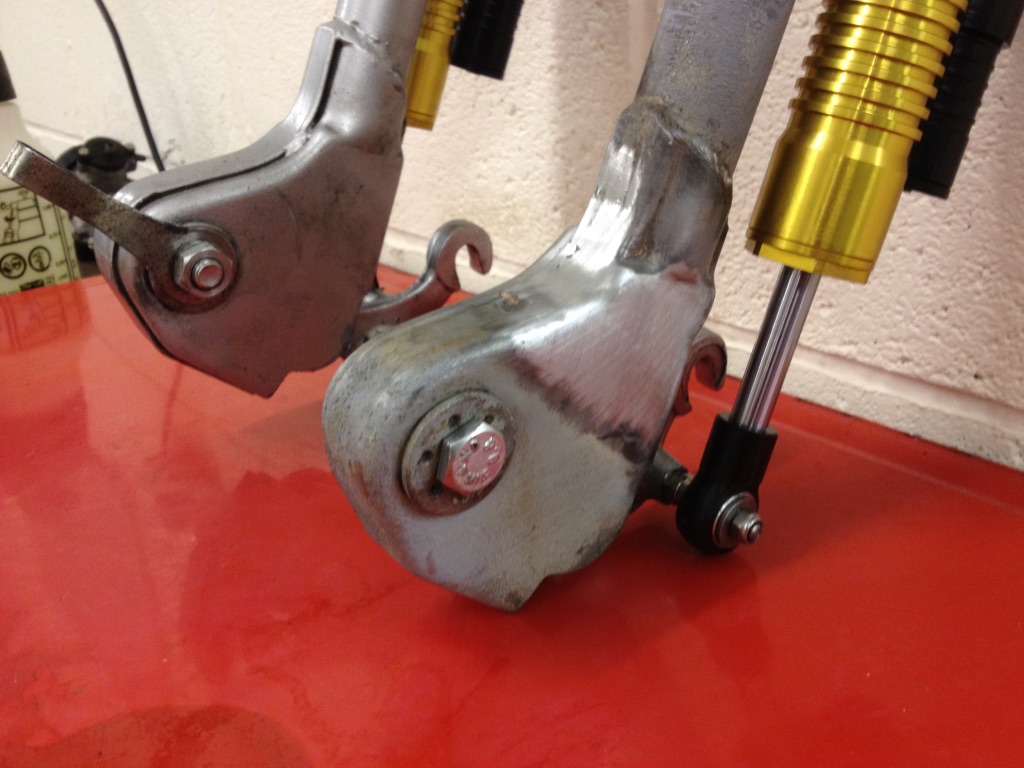
Done straight and rebuilt
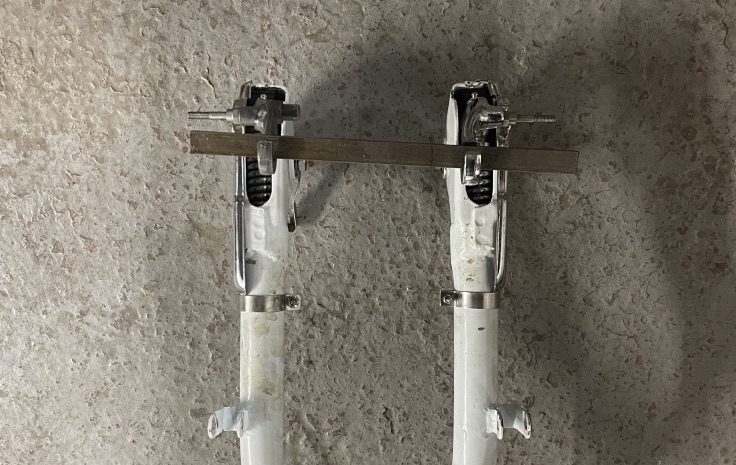
These forks were so called professionally rebuilt! Unbelievable! It took 2 of us with ratchet straps to compress the rubbish parts fitted to remove the links! And the customer wondered why the bike was so hard to ride








